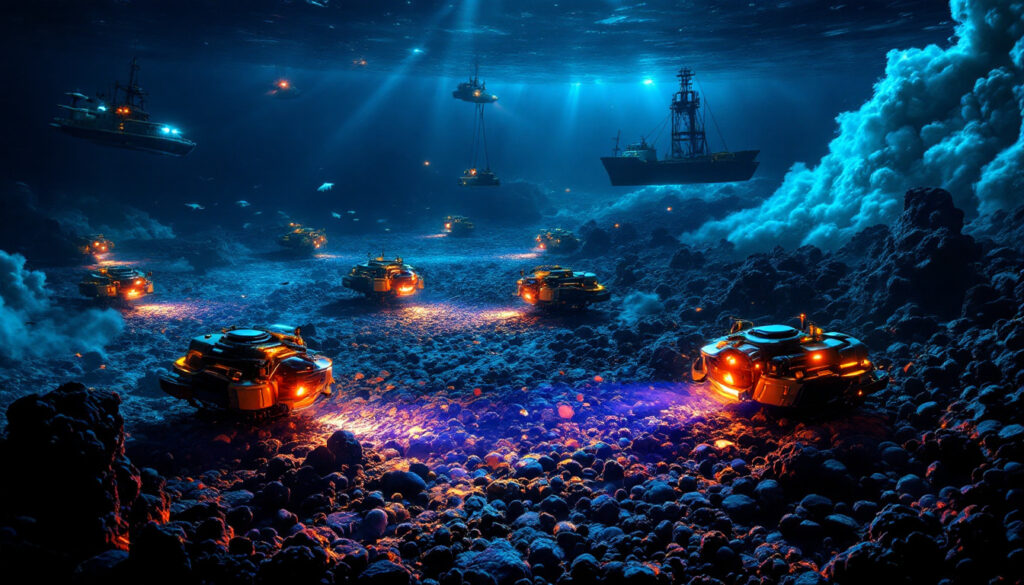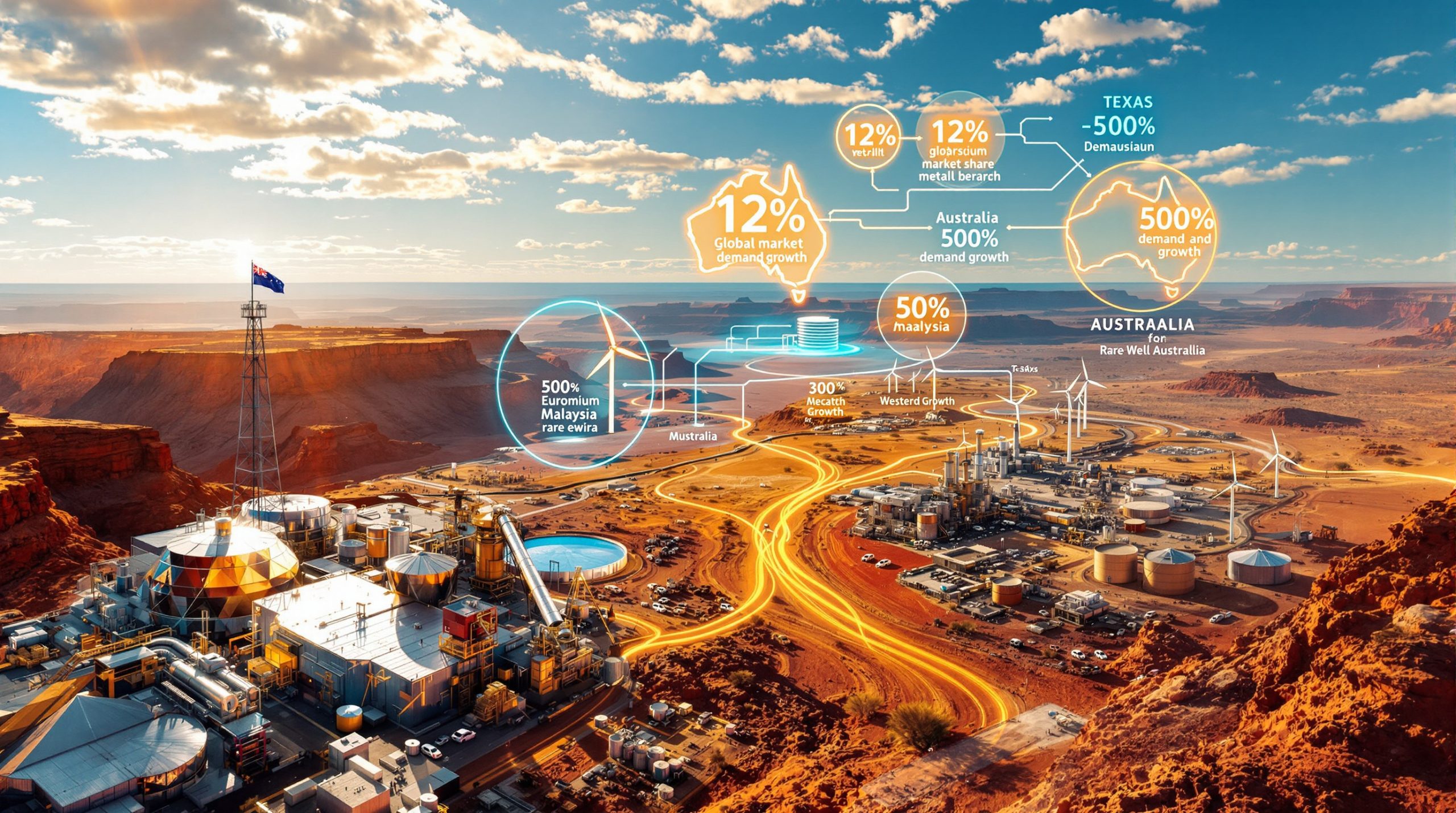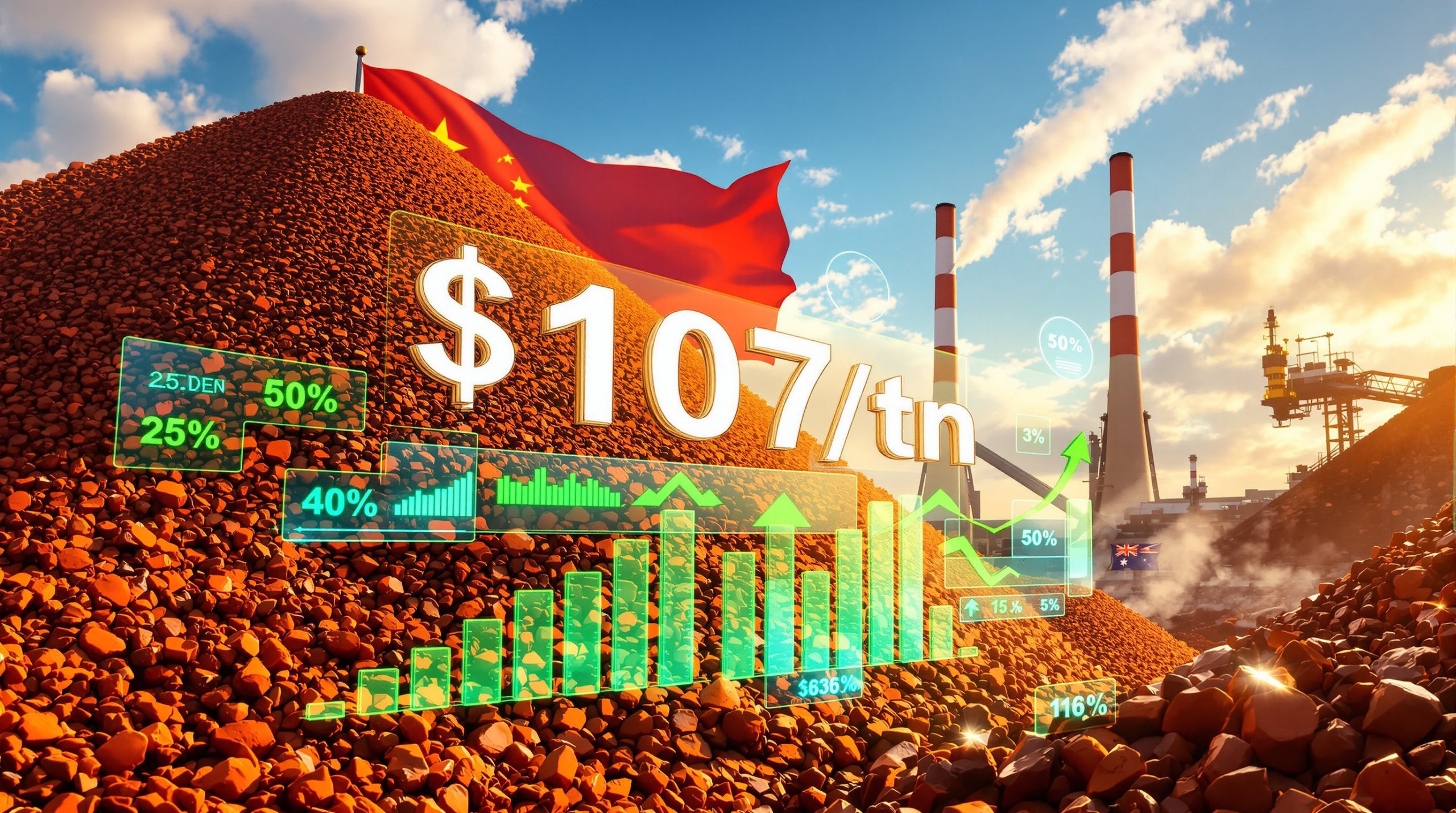Seabed Mining: A New Frontier for Critical Minerals Extraction
The recent US executive order signed on April 24, 2025, marks a pivotal shift in global mineral extraction strategies, positioning seabed mining as an essential component of securing critical mineral supply chains. This emerging industry stands at the intersection of technological innovation, environmental concerns, and geopolitical competition, with significant implications for global resource management in the coming decades.
The Rise of Seabed Mining in Global Mineral Supply
Recent US Executive Order on Seabed Mining
The April 2025 executive order represents a watershed moment for the seabed mining industry, introducing several transformative provisions. Most notably, it mandates an accelerated permitting process for exploration and mining licenses in US waters, with the goal of establishing America as a leader in ocean floor mineral extraction.
Key elements of the order include comprehensive mapping initiatives for the US outer Continental Shelf, where approximately 60% remains unexplored for mineral potential. The Department of Defense has been tasked with assessing whether seabed minerals should be added to the national defense stockpile, highlighting their strategic importance.
The executive order specifically targets critical minerals including nickel, manganese, copper, cobalt, precious metals, and rare earth elements—all essential components for advanced technologies, renewable energy systems, and defense applications.
Historical Context of Deep-Sea Mining
The concept of harvesting minerals from the ocean floor isn't new. Scientific interest dates back to the 1870s when the HMS Challenger expedition discovered metal-rich nodules scattered across the Pacific Ocean floor. These polymetallic nodules, formed over millions of years, represent one of the planet's largest untapped mineral resources.
The governance framework began taking shape with the 1982 United Nations' Law of the Sea Convention (UNCLOS), which established the International Seabed Authority (ISA) as the regulatory body overseeing resources in international waters—deemed the "common heritage of mankind."
Despite decades of exploration licenses being granted by the ISA, commercial seabed mining remains stalled due to the absence of a finalized mining code. This regulatory vacuum has persisted for over eight years, creating uncertainty for potential investors and operators interested in mining feasibility studies.
Why Are Companies Pursuing Seabed Mining Now?
Critical Minerals Supply Challenges
The global transition to renewable energy and electric vehicles has dramatically increased demand for battery metals. Industry projections suggest mineral requirements for clean energy technologies will grow by 400-500% by 2040, creating unprecedented pressure on existing supply chains.
Seabed deposits offer compelling advantages over land-based sources. Polymetallic nodules in the Clarion-Clipperton Zone (CCZ) of the Pacific Ocean contain remarkably high concentrations of critical minerals—nodules with 30% metal content compared to terrestrial deposits that often contain just 1-2% nickel or copper.
Geopolitical factors further drive interest in seabed mining. With China controlling approximately 80% of rare earth element processing globally, western nations view ocean floor resources as a path toward supply chain diversification and reduced dependency on potentially adversarial nations. Understanding global commodities insights is essential for evaluating these complex market dynamics.
The Metals Company's Strategic Pivot
The Metals Company (TMC), formerly DeepGreen Metals, exemplifies the industry's evolving strategy. Frustrated by the ISA's failure to finalize its mining code, TMC has strategically aligned with the United States rather than continuing to wait for international consensus.
The company plans to submit license and permit applications in Q2 2025, focusing operations in the mineral-rich CCZ, where an estimated 21 billion metric tons of polymetallic nodules lie scattered across the seabed. TMC's approach includes partnership with the Pacific island nation of Nauru, which serves as a sponsor state—a relationship structure permitted under UNCLOS provisions.
"We need a regulator willing to give our application a fair hearing," stated TMC representatives, highlighting the pivot from international to national regulatory frameworks as a pragmatic business decision.
How Will Streamlined Permitting Impact Seabed Mining?
Accelerated Environmental Impact Statement Process
One of the most significant aspects of the executive order is the dramatic reduction in environmental review timelines. Traditional mining permits typically require 3-5 years for approval, but the new framework compresses this process to just 12-18 months, with some officials suggesting even shorter periods.
This acceleration raises serious questions about assessment thoroughness. Deep-sea ecosystems remain among the least understood environments on Earth, with scientists estimating that over 90% of species in abyssal plains have yet to be discovered or documented.
The streamlined process attempts to balance national security interests with environmental protection, but critics argue that proper ecological assessment cannot be conducted within such abbreviated timeframes, especially given the limited baseline data available for deep-sea habitats.
Environmental Concerns and Opposition
Environmental organizations including Greenpeace have mounted vigorous opposition to seabed mining, warning of "irreversible damage" to marine biodiversity. Their concerns focus on habitat destruction, sediment plumes that could smother filter-feeding organisms, and disruption of the ocean's carbon sequestration capacity.
The industry faces mounting commercial resistance as well. Several major European automotive manufacturers, including BMW and Volvo, have joined a moratorium on sourcing minerals from deep-sea mining operations, citing sustainability commitments and precautionary principles.
Mining companies counter that seabed extraction produces 70% less CO₂ than land-based alternatives and eliminates social concerns like child labor associated with terrestrial mining in developing regions. However, these claims require independent verification through comprehensive life-cycle assessments and addressing significant ESG challenges.
What Are the Economic Challenges of Seabed Mining?
Capital Requirements and Investment Landscape
The economic viability of seabed mining remains contested. Initial capital expenditures range from $2-5 billion for specialized equipment including remote-operated vehicles (ROVs), processing vessels, and complex logistics systems—figures that dwarf most conventional mining startups.
Investor sentiment reflects this uncertainty, with approximately 60% of mining analysts classifying the sector as "high-risk" with unproven profitability. Return on investment timelines are estimated at 15-20 years, compared to 8-12 years for traditional mining operations.
Industry skepticism persists regarding commercial viability, with parallels often drawn to space mining concepts—technologically feasible but economically challenging under current market conditions and regulatory frameworks.
Partnerships and International Cooperation
To mitigate financial risks, the US strategy emphasizes forming partnerships with other nations, particularly focused on operations within Exclusive Economic Zones (EEZs) where regulatory frameworks may be more established than in international waters.
Current exploration activities in the Cook Islands by CIC Limited demonstrate the potential for regional alliances. The US government has expressed interest in developing similar collaborations in the EEZs of India and Mauritius, offering tax incentives and technology transfers to encourage joint ventures.
These partnerships create commercial incentives for international cooperation outside the ISA framework, potentially accelerating resource development but raising questions about environmental standards and revenue sharing.
How Will Geopolitics Shape the Future of Seabed Mining?
US vs. ISA Regulatory Approaches
The United States' non-membership in the ISA creates a fundamental tension in global seabed governance. By developing a parallel regulatory approach, the US has effectively created competing frameworks for resource extraction—one based on international consensus and another on national interests.
China, as an active ISA member with significant exploration licenses, has advocated for multilateral approaches while simultaneously developing its deep-sea extraction capabilities. This positions Beijing to benefit regardless of which regulatory system prevails.
International reactions to US unilateral actions have been mixed, with traditional allies expressing concern about undermining global governance while simultaneously exploring opportunities within the new regulatory landscape. Companies must develop effective geopolitical market strategies to navigate these complex dynamics.
The Role of National Oceanic & Atmospheric Administration
Within the US framework, the National Oceanic & Atmospheric Administration (NOAA) holds primary authority for seabed mining regulation. Their permitting process requires applicants to demonstrate "no significant environmental harm"—a standard that remains undefined for deep-sea ecosystems.
NOAA faces substantial challenges in enforcement and oversight, given limited deep-sea monitoring capabilities and the vast areas under potential development. Coordination with other federal agencies, including the Department of Defense and Environmental Protection Agency, adds further complexity to the regulatory landscape.
What Could Trigger Widespread Adoption of Seabed Mining?
The "Poster Child" Effect
TMC's potential role as an industry pioneer carries significant implications. If the company successfully demonstrates commercial viability while maintaining acceptable environmental practices, it could trigger broader industry development—similar to how early successes in offshore oil drilling catalyzed that sector's expansion.
Industry analysts suggest the first commercial production from seabed mining could occur by 2028-2030, creating a critical proof-of-concept moment. Early success stories would likely accelerate investment, technological development, and regulatory harmonization.
Balancing Sustainability and Resource Needs
The fundamental tension in seabed mining lies in balancing technological innovation with ecological preservation. Emerging extraction technologies, including sediment curtains and precision nodule collection systems, aim to minimize environmental impacts while maximizing resource recovery.
Economic viability thresholds continue to evolve with metal prices and technological advancements. Projects requiring metal prices 30% above current levels may become feasible through improved extraction efficiency or processing innovations.
Industry best practices remain nascent, with companies developing proprietary approaches in the absence of standardized regulations. This creates both innovation opportunities and risks of insufficient environmental safeguards. Companies pursuing deep-sea mining operations face significant governance challenges in this evolving landscape.
The Floodgates May Open for Seabed Mining
The convergence of geopolitical pressure, technological capability, and mineral demand suggests the floodgates may indeed open for seabed mining in the coming decade. Whether this emerging industry develops within a framework of environmental responsibility or exploitative extraction will depend largely on the regulatory structures established in these formative years.
As commercial interest intensifies and national strategies prioritize resource security, stakeholders must navigate the complex interplay between innovation and conservation. The decisions made regarding seabed mining today will shape not only mineral supply chains but also the future health of the world's last great wilderness—the deep ocean.
Disclaimer: This article contains analysis and forecasts about an emerging industry. The environmental and economic impacts of seabed mining remain subjects of scientific debate, and actual outcomes may differ significantly from current projections.
Curious About Identifying the Next Major Mineral Discovery?
Discover how you can receive immediate real-time alerts on significant mineral discoveries on the ASX, powered by the proprietary Discovery IQ model—transforming complex data into actionable investment opportunities. Explore why historical discoveries can generate substantial returns by visiting the Discovery Alert discoveries page.




